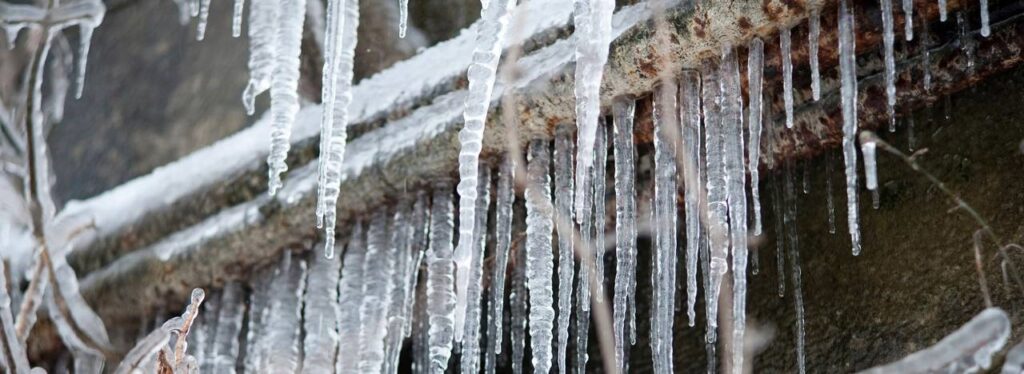How to Avoid Frozen Plumbing in Winter: Pro Tips
How to Avoid Frozen Plumbing in Winter: Pro Tips
Blog Article
In this article underneath you can find a lot of reliable details with regards to 6 Ways to Prevent Frozen Pipes.

Cold weather can ruin your plumbing, particularly by freezing pipes. Here's just how to prevent it from taking place and what to do if it does.
Intro
As temperatures decrease, the threat of frozen pipes increases, potentially bring about costly repair services and water damages. Comprehending exactly how to prevent frozen pipes is critical for house owners in cool environments.
Recognizing Icy Pipelines
What creates pipes to freeze?
Pipelines ice up when revealed to temperature levels below 32 ° F (0 ° C) for expanded durations. As water inside the pipes ices up, it increases, putting pressure on the pipeline wall surfaces and potentially triggering them to rupture.
Risks and problems
Icy pipes can lead to water supply interruptions, home damage, and costly fixings. Ruptured pipes can flood homes and cause substantial structural damages.
Indicators of Frozen Piping
Identifying frozen pipes early can prevent them from bursting.
Just how to determine frozen pipes
Seek reduced water circulation from faucets, unusual smells or sounds from pipelines, and noticeable frost on subjected pipes.
Avoidance Tips
Shielding at risk pipelines
Wrap pipes in insulation sleeves or make use of heat tape to protect them from freezing temperatures. Concentrate on pipes in unheated or outside areas of the home.
Home heating strategies
Keep interior spaces sufficiently heated, specifically areas with pipes. Open up cupboard doors to permit cozy air to flow around pipes under sinks.
Securing Exterior Plumbing
Yard hose pipes and exterior faucets
Disconnect and drain pipes garden hoses prior to wintertime. Install frost-proof faucets or cover outside faucets with shielded caps.
What to Do If Your Pipes Freeze
Immediate activities to take
If you presume frozen pipes, keep faucets open up to eliminate stress as the ice thaws. Make use of a hairdryer or towels taken in warm water to thaw pipelines gradually.
Long-Term Solutions
Architectural modifications
Think about rerouting pipes far from exterior wall surfaces or unheated areas. Include extra insulation to attics, cellars, and crawl spaces.
Upgrading insulation
Buy premium insulation for pipes, attics, and wall surfaces. Correct insulation assists preserve regular temperatures and minimizes the danger of icy pipes.
Verdict
Stopping icy pipelines needs positive procedures and quick reactions. By comprehending the causes, signs, and preventive measures, property owners can protect their pipes throughout cold weather.
5 Ways to Prevent Frozen Pipes
Drain Outdoor Faucets and Disconnect Hoses
First, close the shut-off valve that controls the flow of water in the pipe to your outdoor faucet. Then, head outside to disconnect and drain your hose and open the outdoor faucet to allow the water to completely drain out of the line. Turn off the faucet when done. Finally, head back to the shut-off valve and drain the remaining water inside the pipe into a bucket or container. Additionally, if you have a home irrigation system, you should consider hiring an expert to clear the system of water each year.
Insulate Pipes
One of the best and most cost-effective methods for preventing frozen water pipes is to wrap your pipes with insulation. This is especially important for areas in your home that aren’t exposed to heat, such as an attic. We suggest using foam sleeves, which can typically be found at your local hardware store.
Keep Heat Running at 65
Your pipes are located inside your walls, and the temperature there is much colder than the rest of the house. To prevent your pipes from freezing, The Insurance Information Institute suggests that you keep your home heated to at least 65 degrees, even when traveling. You may want to invest in smart devices that can keep an eye on the temperature in your home while you’re away.
Leave Water Dripping
Moving water — even a small trickle — can prevent ice from forming inside your pipes. When freezing temps are imminent, start a drip of water from all faucets that serve exposed pipes. Leaving a few faucets running will also help relieve pressure inside the pipes and help prevent a rupture if the water inside freezes.
Open Cupboard Doors
Warm your kitchen and bathroom pipes by opening cupboards and vanities. You should also leave your interior doors ajar to help warm air circulate evenly throughout your home.
:strip_icc()/snow-outdoor-faucet-pipes-4af65d1e5e904fb1aa7bf74071fe5d89.jpg)
We were introduced to that write-up on How to Prevent Your Pipes From Freezing through someone on another website. Liked our write-up? Please share it. Let others find it. Thanks a lot for being here. Return soon.
Call Today Report this page